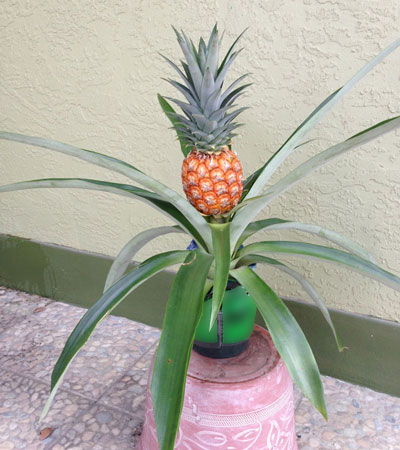![]()
Ananas Comosus
One of the more striking and beautiful tropical fruit-bearing plants, the pineapple is the only bromeliad that bears fruit in this way. It was at first thought to be related to pine trees as the fruit resembles a pine cone but they are not related.
Originally brought by Columbus to Europe, the 1600's saw the receiving of a pineapple as a gift as “Royal Privilege”, meant only to and for the "upper crust" of society. In 1675 the English were able to grow their first pineapples and they became even more popular, usually as a decoration atop the offerings at large banquets. Over the years the pineapple has come to symbolize a deep sense of welcome, good cheer and of taking great care of one’s guests in the finest manner possible, as well as a symbol of wealth and success. For this reason, many hotels and hospitals, and other related businesses, have adopted the pineapple as it's logo.
The pineapple's fruit begins as berries that coalesce into a single large fruit, very sweet, and are served in many different dishes, as well as fresh cut from the plant. They can be cooked, juiced and preserved.
The scientific name "Ananas comosus" comes from the original Tufi word "nanas", which means "excellent fruit", and "comosus", meaning "tufted", referring to the stem. Raw pineapple is an excellent source of manganese and Vitamin C . It may also be used as a meat marinade and tenderizer.
Things You Need To Know
Prefers bright light.
Blooms year-round.
Prefers moderately moist soil. Water thoroughly when just the soil surface is dry to the touch.Height
Depending on environment, plants can grow up to 36” (91 cm) tall.
Plant 36” (91 cm) apart.
USDA Zone 9 (20°F) to USDA Zone 11 (40°F).
Indoors year-round.




